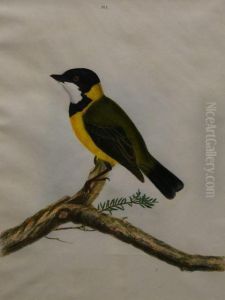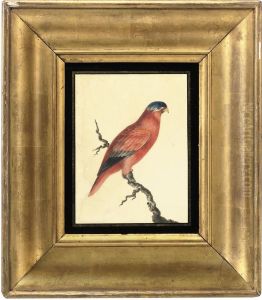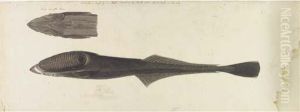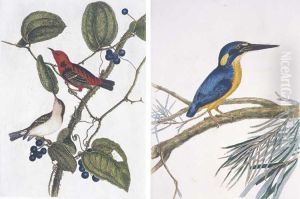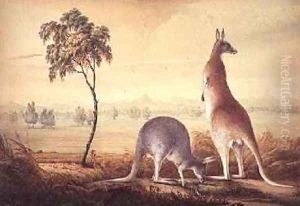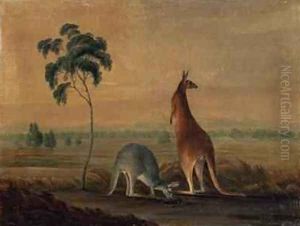John William Lewin Paintings
John William Lewin was an English-born artist and naturalist, recognized as the first professional artist to settle in New South Wales, Australia. Born in 1770 in England, Lewin developed an early interest in natural history and art, which would pave the way for his career. He arrived in Australia in 1800, after an initial failed attempt to reach the continent in 1798 due to the shipwreck of the HMS Buffalo.
In Australia, Lewin quickly established himself as a prominent figure in the colonial art scene, focusing primarily on the documentation of the natural world. His works, which include watercolors, drawings, and prints, are notable for their attention to detail and accuracy in depicting Australian flora and fauna. This was a significant contribution to the scientific and artistic record of the early 19th century, a time when European knowledge of Australia's unique ecosystems was still in its infancy.
Lewin's most renowned publication, 'Birds of New South Wales', published in 1808, was the first illustrated book on Australian birds. It underscored his pioneering role in Australian natural history illustration. Despite the challenges of the time, including the limited availability of materials and the isolation from the European scientific community, Lewin managed to produce work of remarkable quality and scientific value.
Throughout his career in Australia, Lewin remained closely engaged with the scientific community, contributing illustrations to various scientific publications and collaborating with other naturalists. His artistry and dedication to the accurate portrayal of subjects helped lay the groundwork for future generations of natural history artists in Australia.
John William Lewin passed away in Sydney in 1819. His legacy is preserved in the collections of major Australian institutions, including the National Library of Australia and the State Library of New South Wales, where his works continue to be celebrated for their historical and scientific significance.

